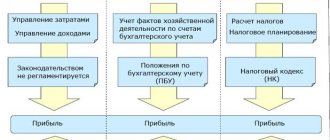Depreciation of used assets
If, during a certain period, fixed assets acquired by an organization were in use by the previous owner, then when calculating depreciation using the straight-line method, their useful life can be reduced by the duration of this period (paragraph 1, clause 7, article 258 of the Tax Code of the Russian Federation). With the non-linear method, fixed assets that have been in operation must be included in the depreciation group in which they were included by the previous owner (clause 12 of Article 258 of the Tax Code of the Russian Federation). For more information about depreciation of such objects, see How to calculate depreciation of used fixed assets in tax accounting.
VAT deduction on fixed assets requiring installation
For objects that require installation to bring them into working condition, the law allows for deduction of tax paid to third-party organizations performing work on the assembly or installation of objects, as well as suppliers of equipment and materials used in installation work. This is clearly stated in paragraph 6 of Art. 171 Tax Code of the Russian Federation.
Assets requiring installation and assembly are initially recorded in accounting account 07 “Equipment for installation” with further debiting to account 08 as the equipment is transferred for installation. Capitalization to account 01 occurs only after the assembled objects are completely ready for use. In this case, it is allowed to deduct “input” VAT already at the time the object is reflected on account 07 (letter of the Ministry of Finance of Russia dated January 29, 2010 No. 03-07-08/20).
Occurrence of differences according to PBU 18/02
Due to differences in the rules for depreciation of property in accounting and tax accounting, the amounts of depreciation charges that are included in expenses when determining book and taxable income may not be the same. In particular, the amount of depreciation charges will be different:
- if the initial cost of fixed assets differs (the procedure for forming the initial cost of fixed assets in accounting and tax accounting is presented in the table);
- if the organization uses different methods of calculating depreciation;
- if different useful life periods are established for the same object;
- if different increasing (decreasing) coefficients are used when calculating depreciation;
- if an organization calculates income tax on a cash basis and accrues depreciation on unpaid fixed assets in accounting.
In each of these cases, permanent or temporary differences will occur. Therefore, permanent or deferred tax assets (liabilities) will have to be reflected in accounting. Such rules are established by paragraph 3 of PBU 18/02.
An example of reflecting a deferred tax asset in accounting with a temporary difference between the amounts of depreciation accrued in accounting and tax accounting
Alpha LLC purchased a passenger car and put it into operation on December 25, 2012. The initial cost of the car in accounting and tax accounting is 200,000 rubles. When determining the useful life, the organization applies the Classification of fixed assets, approved by Decree of the Government of the Russian Federation of January 1, 2002 No. 1. The car is included in the third depreciation group. The estimated useful life is four years.
According to the accounting policy, depreciation on vehicles is calculated:
- in accounting - by the sum of the numbers of years of useful life;
- in tax accounting - using the linear method.
The sum of the numbers of years of useful life of the car is: 1 + 2 + 3 + 4 = 10.
In accounting, depreciation on the car was calculated in the following amounts.
In 2013 (first year of operation):
- annual depreciation amount - 80,000 rubles. (4: 10 × 200,000 rub.);
- monthly depreciation amount - 6667 rubles. (RUB 80,000: 12 months).
In 2014 (second year of operation):
- annual depreciation amount – 60,000 rubles. (3: 10 × 200,000 rub.);
- monthly depreciation amount - 5000 rubles. (RUB 60,000: 12 months).
In 2020 (third year of operation):
- annual depreciation amount - 40,000 rubles. (2: 10 × 200,000 rub.);
- monthly depreciation amount - 3334 rubles. (RUB 40,000: 12 months).
In 2020 (fourth year of operation):
- annual depreciation amount – 20,000 rubles. (1: 10 × 200,000 rub.);
- monthly depreciation amount - 1667 rubles. (RUB 20,000: 12 months).
In tax accounting, the amount of monthly depreciation deductions is constant. It is equal to: 200,000 rubles. : 48 months = 4167 rub.
The amounts of depreciation in accounting and tax accounting are different. Therefore, deductible temporary differences arise in the first two years of the vehicle's operation.
In 2013, the monthly amount of the deductible temporary difference is: RUB 6,667. – 4167 rub. = 2500 rub.
Each month, this difference results in a deferred tax asset:
Debit 09 Credit 68 subaccount “Calculations for income tax” – 500 rubles. (RUB 2,500 × 20%) – a deferred tax asset is reflected from the difference between the amounts of depreciation accrued in accounting and tax accounting.
In 2014, the monthly amount of the deductible temporary difference is: 5,000 rubles. – 4167 rub. = 833 rub.
Each month, this difference results in a deferred tax asset:
Debit 09 Credit 68 subaccount “Calculations for income tax” – 167 rubles. (RUB 833 × 20%) – a deferred tax asset is reflected from the difference between the amounts of depreciation accrued in accounting and tax accounting.
In 2020, the amount of depreciation reflected in tax accounting exceeds the amount of depreciation accrued in accounting.
Every month during 2020, the temporary difference is reduced by the amount: RUB 4,167. – 3334 rub. = 833 rub.
Reducing the temporary difference entails writing off part of the deferred tax asset:
Debit 68 subaccount “Calculations for income tax” Credit 09 – 167 rub. (RUB 833 × 20%) – part of the deferred tax asset is written off.
The total amount of depreciation for three years of operation of the car was:
- in accounting – 180,000 rubles. (RUB 80,000 + RUB 60,000 + RUB 40,000);
- in tax accounting – 150,000 rubles. (RUB 200,000: 48 months × 36 months).
Every month during 2020, the temporary difference is reduced by the amount: RUB 4,167. – 1667 rub. = 2500 rub.
Reducing the temporary difference entails writing off part of the deferred tax asset:
Debit 68 subaccount “Calculations for income tax” Credit 09 – 500 rub. (RUB 2,500 × 20%) – part of the deferred tax asset is written off.
An example of the formation of permanent and temporary differences in connection with various methods of calculating depreciation in accounting and tax accounting
Alpha LLC purchased a passenger car and put it into operation on December 25, 2014. No further resale of the car was planned. The initial cost of the car in accounting and tax accounting is 200,000 rubles. When determining the useful life, the organization applies the Classification of fixed assets, approved by Decree of the Government of the Russian Federation of January 1, 2002 No. 1. The car is included in the third depreciation group. The estimated useful life is four years.
According to the accounting policy, depreciation on vehicles is calculated:
- in accounting - by the sum of the numbers of years of useful life;
- in tax accounting - using the linear method.
On June 18, 2020, Alpha donated a car to an orphanage.
In accounting, depreciation on the car was calculated in the following amounts.
The sum of the numbers of years of useful life is equal to: 1 + 2 + 3 + 4 = 10.
In 2020 (first year of operation):
- annual depreciation amount - 80,000 rubles. (4: 10 × 200,000 rub.);
- monthly depreciation amount - 6667 rubles. (RUB 80,000: 12 months).
In 2020 (second year of operation):
- annual depreciation amount – 60,000 rubles. (3: 10 × 200,000 rub.);
- monthly depreciation amount - 5000 rubles. (RUB 60,000: 12 months).
In 2020, depreciation is calculated from January to June. The amount of accrued depreciation is: 6 months. × 5000 rub. = 30,000 rub.
For the entire period of operation of the vehicle, depreciation was accrued in the accounting records in the amount of RUB 80,000. + 30,000 rub. = 110,000 rub.
The residual value of the car in accounting at the time of disposal is equal to: 200,000 rubles. – 110,000 rub. = 90,000 rub.
In tax accounting, the amount of monthly depreciation deductions was the same and amounted to: 200,000 rubles. : 48 months = 4167 rub./month.
The total amount of depreciation accrued in tax accounting for the entire period of operation of the car (18 months) is: 18 months. × 4167 rub./month. = 75,000 rub.
The residual value of the car in tax accounting at the time of disposal is equal to: 200,000 rubles. – 75,000 rub. = 125,000 rub.
In accounting, depreciation is charged in a larger amount than in tax accounting. Therefore, deductible temporary differences arise.
In 2020, the monthly amount of the deductible temporary difference is: RUB 6,667. – 4167 rub. = 2500 rub.
Each month, this difference results in a deferred tax asset:
Debit 09 Credit 68 subaccount “Calculations for income tax” – 500 rubles. (RUB 2,500 × 20%) – reflects the emergence of a deferred tax asset.
In 2020 (from January to June), the monthly amount of the deductible temporary difference is: RUB 5,000. – 4167 rub. = 833 rub.
Each month, this difference results in a deferred tax asset:
Debit 09 Credit 68 subaccount “Calculations for income tax” – 167 rubles. (RUB 833 × 20%) – reflects the emergence of a deferred tax asset.
The total amount of deferred tax assets for one and a half years of car operation is equal to: 500 rubles. × 12 months + 167 rub. × 6 months = 7002 rub.
When the car was disposed of, the Alpha accountant made the following entries in the accounting records:
Debit 01 subaccount “Retirement of fixed assets” Credit 01 subaccount “Fixed assets in operation” – 200,000 rubles. – the original cost of the car has been written off;
Debit 02 Credit 01 subaccount “Disposal of fixed assets” – 110,000 rubles. – the amount of accrued depreciation on the retired vehicle is written off;
Debit 91-2 Credit 01 subaccount “Disposal of fixed assets” – 90,000 rubles. (200,000 rubles – 110,000 rubles) – the residual value of the car is reflected in other expenses;
Debit 99 Credit 09 – 7002 rub. – the deferred tax asset is written off from the difference in the amounts of depreciation accrued in accounting and tax accounting.
When calculating income tax, expenses in the form of the residual value of gratuitously transferred fixed assets are not taken into account. Therefore, a permanent difference of RUB 90,000 arises, which leads to the formation of a permanent tax liability.
The Alpha accountant reflected it with the following posting:
Debit 99 subaccount “Continuous tax liabilities” Credit 68 subaccount “Calculations for income tax” - 18,000 rubles. (90,000 rubles × 20%) – reflects the permanent tax liability associated with the disposal of the car.
An example of reflection in accounting and taxation of depreciation on a fixed asset received free of charge from the founder. The founder's share in the authorized capital of the organization is 30 percent
On January 12, 2020, Alpha LLC received production equipment free of charge from the founder. The founder's share in the authorized capital of the organization is 30 percent. According to an independent assessment, the market value of the equipment was 200,000 rubles.
On January 13, 2020, the equipment was installed and put into operation.
Entries have been made in the organization's accounting records.
January 2020:
Debit 08 Credit 98-2 – 200,000 rub. – reflects the market value of equipment received free of charge, which will be included in fixed assets;
Debit 01 subaccount “Fixed asset in operation” Credit 08 – 200,000 rub. – equipment was accepted for accounting and put into operation at its original cost.
In tax accounting, the accountant included equipment as depreciable property at market value in the amount of 200,000 rubles. In January 2020, this amount was included in non-operating income.
In accounting, deferred income is recognized over the entire useful life of the equipment. As a result, a deductible temporary difference arises, which leads to the formation of a deferred tax asset in the amount of RUB 40,000. (RUB 200,000 × 20%):
Debit 09 Credit 68 subaccount “Calculations for income tax” – 40,000 rubles. – a deferred tax asset is reflected on the market value of equipment received free of charge.
The useful life of the equipment is 10 years (120 months). In accounting, depreciation is calculated using the straight-line method.
The annual depreciation rate in accounting is 10 percent (1: 10 years).
The annual amount of depreciation charges in accounting is 20,000 rubles. (RUB 200,000 × 10%).
The monthly amount of depreciation deductions in accounting is 1667 rubles/month. (RUB 20,000: 12 months).
In tax accounting, depreciation is also calculated using the straight-line method.
The monthly depreciation rate was: 1: 120 months. × 100% = 0.8333%.
The amount of monthly depreciation was: 200,000 rubles. × 0.8333% = 1667 rub.
Depreciation on equipment in accounting and tax accounting begins in February 2020.
Alpha's accountant makes the following monthly accounting entries:
Debit 20 Credit 02 – 1667 rub. – depreciation on equipment has been calculated;
Debit 98-2 Credit 91-1 – 1667 rubles. – other income is reflected in the amount of depreciation of equipment received free of charge;
Debit 68 “Calculations for income tax” Credit 09 – 333 rub. (RUB 1,667 × 20%) – the deferred tax asset was reduced.
In tax accounting, depreciation will be recognized monthly in the amount of 1,667 rubles.








